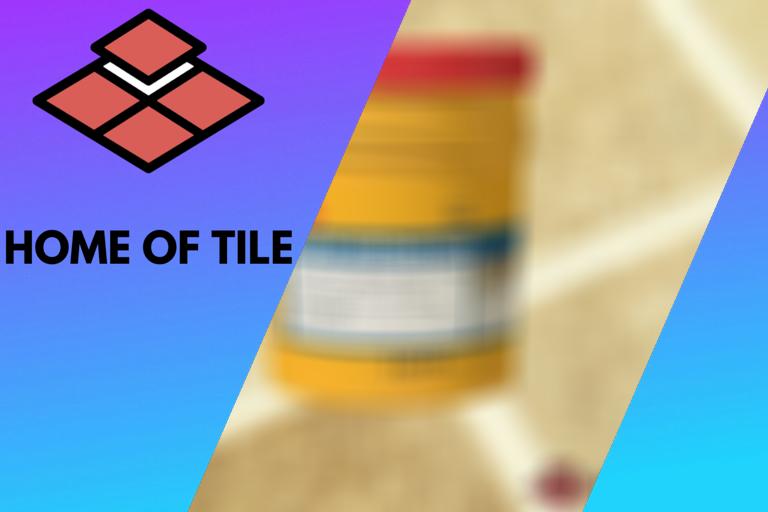How To Clean Grout Without Damaging It. What the pros say
There are several ways you can clean grout that does not involve damaging chemicals. Of course, we all know bleach can be used, but what can be used instead of harsh chemicals?
To clean your grout without damaging it you can start by using warm water and a bristle brush. If the dirt is stubborn, you can use stronger cleaners which tend to be acidic in nature like lemon juice or white vinegar. If your grout is still not clean, you may have to call in the professionals.

There are many alternatives to chemical cleaners, such as hydrogen peroxide. These cleaners do need time to set to be most effective but can give you great results. Continue reading below to learn the steps of cleaning your grout without damage and a list of how to use several proven options.
Contents
Guide To Clean Grout Gently
There are a few steps to getting your grout clean without damaging it in any way.
- Step 1: Scrub your grout. Using warm water and a medium bristle brush is the most effective.
- Step 2: Apply your cleaner. There are several options for different cleaners listed in the next section. We’ll go in-depth there with how to use each cleaner. They are great alternatives to chemical cleaners; most can be used together if needed. The different cleaners will need time to set on the grout before cleaning it.
- Step 3: Call a professional. If these steps and cleaners do not give you the desired result, it may be time to call in a professional. They can offer the service of a deep clean and possibly a grout replacement.
Non-Toxic Cleaners for Grout
Here are a few non-toxic solutions that you can use to clean your grout without having to resort to harsh chemicals that could cause damage.
● Lemon Juice
Lemon Juice has been a known cleaner for many decades. It has been used to clean everything from windows to wood paneling to grout. It is also known for killing bacteria on surfaces.
Lemon juice is very easy to use. You pour the juice directly on your grout, allow it to sit for 10-15 minutes, and then wipe clean with a damp cloth. Lemon juice is also naturally fragrant, leaving the room smelling fresher.
Remember that you should be using concentrated lemon juice to clean your grout. You can use both fresh or bottled juice, depending on what’s easier. The acidity in the lemon juice will eat away at the dirt without scratching the surface of the tiles.
● White Vinegar
White vinegar is very similar to lemon juice except that it can leave a strong smell behind. You would apply it just the same, directly to the grout. Leave it for 10-15 minutes and wipe it with a damp cloth or scrub with a soft-bristled toothbrush.
● Baking Soda
You can mix baking soda with lemon juice or white vinegar and use it as a spray on your grout. The foaming action caused by mixing baking soda with an acid might help loosen up the dirt. Another option is to mix it with water creating a paste. Smooth it over your grout, set it for 10-15 minutes (same if you use it as a spray), and wipe clean with a damp cloth.
● Steam
Steam is a great cleaner as it can also help kill other bacteria as well. If the grout has a bit of grease to it, like on kitchen tile, then it can help loosen the hold the grease has on the grout and allow you to wipe it away. Simply apply the steam to the grout via a steamer.
There are steamers for your floors that act like a mop and steamers you can use on hanging fabrics that work great on your backsplash tiles. Once you’ve given them good steam, go over them with a soft dry cloth and wipe away any residue.
What To Do if You Damage the Grout
You tried your best to avoid it but ended up damaging your grout. How do you fix it? Follow the steps below.
- Step 1. Clean broken grout: Clean the broken grout using one of the methods listed above.
- Step 2. Remove damaged grout: Remove any damaged grout using a grout saw; be careful not to chip the tile.
- Step 3. Dampen the tiles: Dampen the tile just a bit with a damp towel or sponge.
- Step 4. Apply the new grout: Carefully apply the new grout, being sure to remove any excess that ends up on your tiles with a damp sponge.
- Step 5. Let the grout set: Let the new grout set to allow it to harden so it creates a haze on the tile that can be polished away with a dry towel.
- Step 6. Seal the grout: Reseal the new grout using clear epoxy after it is completely dry.
What To Do if You Chip the Tile
Sometimes you may chip the tile when you’re cleaning or repairing the grout. Here’s what you can do if you accidentally chip your tiles.
● Patching
To patch the tile, remove the debris left from the chip. You can use a cleaner and then wipe with a clean cloth.
Once it is entirely dry, apply clear epoxy directly to the crack. You can do this with a toothpick for hairline cracks and a popsicle stick for wider ones. The craft stick can then be used to run along the epoxy to make sure it is evenly distributed. You would then allow the epoxy to cure.
As a finishing touch, apply a bit of oil or urethane-based paint to ensure the color matches your patch to your original tile. Then brush the sealer over it and let it dry.
Conclusion
Cleaning your grout is important for keeping it looking new and free from bacteria. Using things like vinegar or steam are not only a natural, chemical-free way of cleaning them but will also be easy on the budget.
If these options don’t work on your tile, then a professional can help give you the results you are looking for. If you damage or chip your tile when removing grout, there are ways to fix it in just a few steps. So there is no need to panic. You can have your tiles looking good as new in no time.








